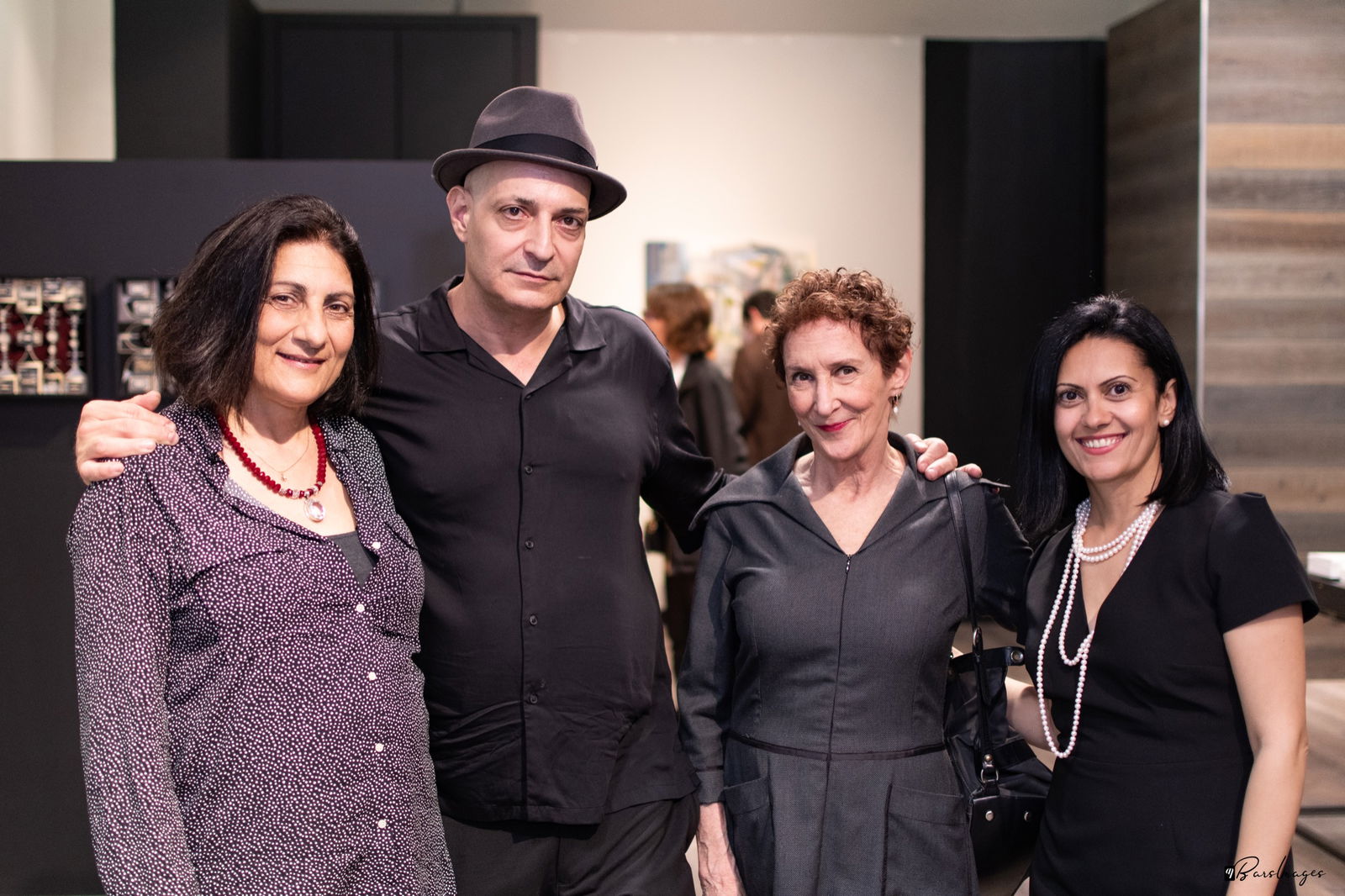
NEW YORK, NY—The future of the Armenian community was on display at the opening reception of “The Future of Things Passed” exhibition in Manhattan on May 19th.
The exhibition features celebrated women artists of Armenian descent Eozen Agopian, Melissa Dadourian, Linda Ganjian and Judith Simonian. It is the first developed by the Atamian Hovsepian Curatorial Practice, co-founded by Christopher Atamian and Tamar Hovsepian. Part of the proceeds from art sales at the exhibition will be donated to the New York Armenian Students’ Association Scholarship Fund.

Atamian and Hovsepian launched the practice to promote representation of contemporary artists from marginalized backgrounds.
“We identified that we want to show marginalized groups—Armenian, women, LGBTQ+, people of color,” Hovsepian told the Armenian Weekly.
Hovsepian has previously worked with all of the artists featured in “The Future of Things Passed” in former galleries she has curated. She laments that while artists like Simonian, who gained renown within the downtown Los Angeles art scene of the 1980s, are internationally acclaimed, they are not as well known among Armenians. Through her joint curatorship with Atamian, she hopes to educate and cultivate a new generation of Armenian art collectors.
“Larry Gagosian is one of the wealthiest, most famous art dealers, and he doesn’t have a single Armenian artist that he represents,” she offered as an example of the absence of support for contemporary Armenian art. “Why is there not a single art gallery in Chelsea that shows Armenian artists?”
Contemporary Armenian artists lack visibility both within the Armenian community and the broader contemporary art world, according to Hovsepian. She recalled the “Armenia!” exhibition at the Metropolitan Museum of Art, which displayed the artistic achievements of Armenian people up until the 17th century.
“You can’t title an exhibition ‘Armenia!’ and stop and then not talk about what’s happening now. Where is the contemporary Armenian art?” Hovsepian asked. “Outside of Arshile Gorky, who do we have at the Museum of Modern Art?”
“The Future of Things Passed” explores how art can “deconstruct and uncover elements of the past through sense memory and found objects, while making lasting statements through these interpretations,” as stated in an essay presented to visitors at the gallery door. The orientation of the gallery toward the future is inspired by Armenian Futurism, defined by Sylvia Alajaji as “a realm in which re-imaginings and re-claimings of queer and otherwise marginalized Armenian pasts give way to futures of possibility and wonder.”
Atamian says that Armenian Futurism, theorized by artists like Kamee Abrahamian, Mashinka Firunts Hakopian and Hrag Vartanian, can inspire creativity and visionary thinking beyond pain and hardship.
“How do we create an inclusive vibrant forward-thinking Armenian community that thinks about its future and being progressive and being at the cutting edge?” Atamian posed.
Atamian, a celebrated writer, editor and translator, noted how the artwork on display repurposes memories and found objects from the past. For instance, Ganjian’s series “Map of Her Prayers, No. 1-6,” incorporates inscriptions from a prayer book her grandmother carried with her through Der Zor during the Armenian Genocide.

“How do you take something from the past and make something beautiful that’s forward thinking and that people want to collect?” Atamian said of the impact of Ganjian’s artwork.
Atamian believes that Armenians should support contemporary Armenian artwork, not only because it is beautiful, but also because it can promote Armenian political causes, such as Armenian Genocide recognition and the peaceful resolution of the Artsakh conflict, by generating an emotional investment in these issues.
“People need to know who Armenians are,” Atamian said. “Americans and people in Europe don’t have a gut reaction to it, because they don’t know about it. If you have a piece of art or a book that is Armenian, you have an emotional connection rather than just a policy paper.”
K Sherbetdjian attended the opening reception and was struck by the emotional intensity of Ganjian’s artwork.
“I’m looking at each individual component, and I’m wondering what the story is behind it and what the significance is for the artist, and then also what the significance is for me. The text that’s incorporated is in Armenian. I don’t speak Armenian. I just wonder what the passages are. It looks like there’s doorbells. I’m wondering if that is a signal to God or a signal for help. I like pieces where there’s a lot to think about,” Sherbetdjian reflected on “Map of Her Prayers.”
As an artist, Caroline Gates recognized her own art studio within Studio Ballou, a painting of an art studio by Simonian. Gates wandered into “The Future of Things Passed” after a painting by Simonian near the door caught her eye.
“Even in the abstraction you can hold onto something concrete. It does a really good job of taking us back through spaces that are familiar, but we could see it through every lens of the different times that we were there,” Gates said while studying Studio Ballou. “I feel very placed. I could stare at this forever.”

Atamian and Hovsepian plan to continue curating exhibitions to place artwork by artists from marginalized backgrounds within institutions like museums and galleries. They hope Armenians will support their fellow artists by collecting contemporary art.
“This is as beautiful as the art you find in any museum and community, so why not represent it?” Atamian posed.
“The Future of Things Passed” will be on display until May 29, 2022 from 11 A.M.-7 P.M. on the ground floor of 138 West 25th Street, New York, NY 10001.



Wonderful. My congratulations.
Krikor Momdjian
Merci shad!